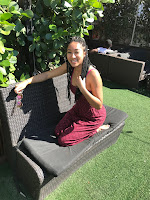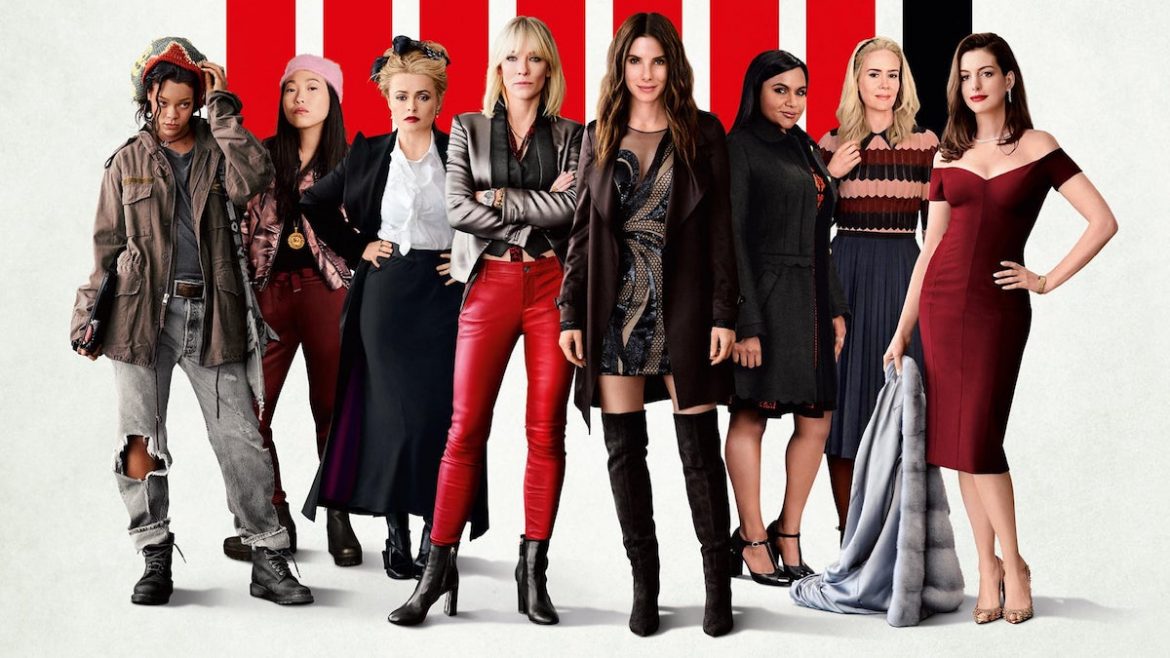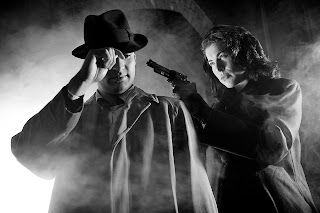It's time for my favorite part of any production... the characters. I really enjoy designing characters and costumes.
Each character has their own assigned color. It would help to develop their individual personalities and motives for why they would kill the victim. It would also add some color (even though they will all be dark hues).
I want all of the suspect characters to have some splash of purple somewhere (since the color purple represents mystery). It would help to develop how all of the characters have something to hide, and how nothing is really clear or straight-forward. It's all a mystery.
I want the suspect characters to also have a hint of white (since white represents innocence). It would serve as a subtle hint that they are all innocent of actually committing the murder.
Victoria Vaughn (Victim): She's popular, peppy, dresses kind of basic/average
For the opening, only a picture of the victim is needed. Therefore, I don't need to cast anyone to play her. So, I asked my sister if I could use her picture for this purpose (and she gave me permission).
These are the four pictures that I'm deciding from. I don't think I'm going to choose the one in the top right, because it doesn't clearly show her face because of her glasses. I don't think I'm going to choose the one in the top left either because she's kind of in a weird position. I'm not entirely sure about whether I should choose the bottom left or right picture. The bottom left clearly shows her face, but the bottom right shows all of her, including her outfit.
Victor Vaughn (Brother): Nerdy, wears silly/punny t-shirts often
The color that I chose for Victor is blue. In this context, the color blue represents his loyalty to his the murderer (his girlfriend); he's willing to go down for his sister's murder because of her.
Since he's meant to be kind of nerdy, he'll be wearing a t-shirt with some type of pun or math/science joke on it, a jacket, jeans, and converse. (Similar to Peter Parker's style from Spiderman Homecoming).
He could also wear something slightly more formal/professional. Like a sweater over a plaid shirt. (Again, similar to Peter Parker). Most likely a purple plaid under a blue sweater.
Kira Kessler (Cousin): Rebel, alternative, slight punk
The color that I chose for Kira is red. In this context, the color red represents her anger at how well-liked her cousin was among their family. Since she's somewhat of a rebel and likes to be different, she's the polar opposite of her cousin (who's a favorite among the family). She's kind of the black sheep of the family.
She'll be wearing black tights, dark blue denim shorts, black tank top, oversized red flannel, and dark purple/plum lipstick (maybe a jean jacket).
Gia Greggory (Friend): Preppy, also dresses kind of basic/average (similar to Victoria)
The color that I chose for Gia is green. In this context, the color green represents her jealousy at how Victoria was more popular than she was.
She could also wear a white shirt with a green jacket over it and a pair of jeans.
Her hair will be put up with a purple scrunchy.
Detective Alred: Curious, dresses professional (with a hint of casual)The color I chose for Detective Alred is brown. In this context, the color brown represents honesty and resiliency. It's also a neutral color, just like how the detective is a neutral party; her main motive being to solve the case. (She won't have any purple)
She'll be wearing a simple white shirt or button down, khaki pants, and a navy blazer/jacket.
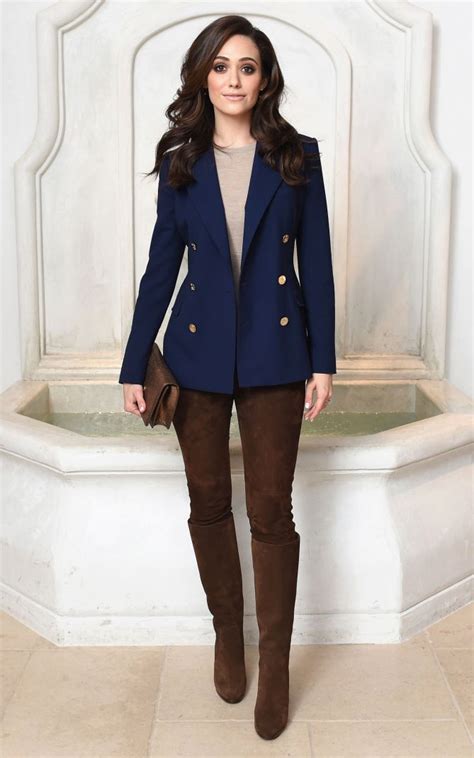

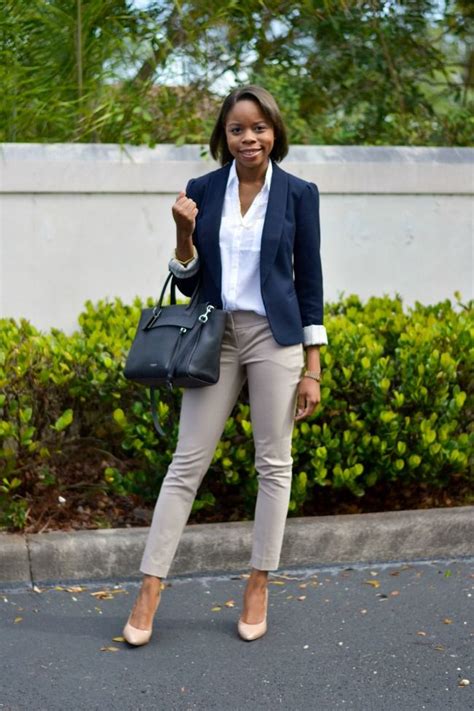
This is what I have so far for the designs of my characters. I'm feeling good with what I have planned and hopefully I'll be able to fully execute my idea how I want to.
She'll be wearing a simple white shirt or button down, khaki pants, and a navy blazer/jacket.
This is what I have so far for the designs of my characters. I'm feeling good with what I have planned and hopefully I'll be able to fully execute my idea how I want to.
